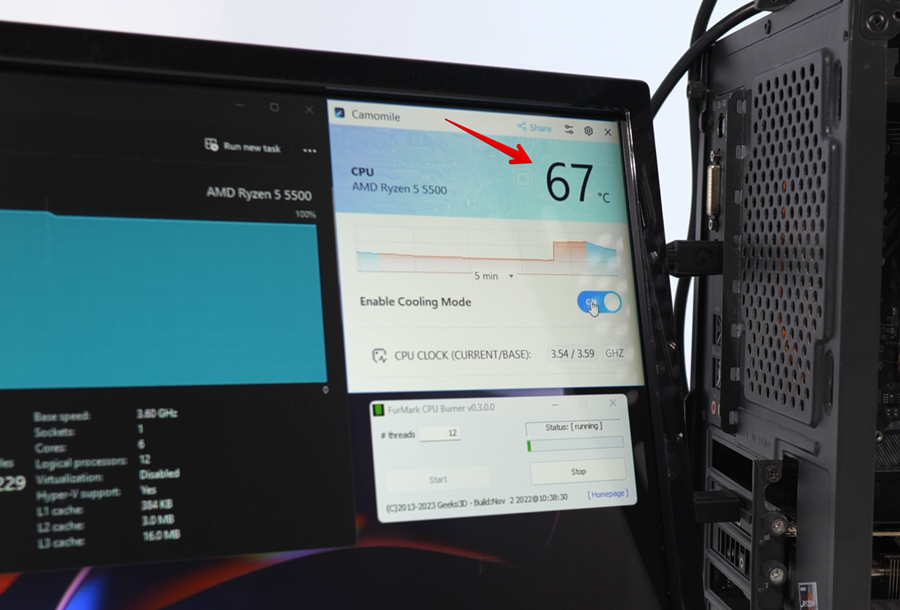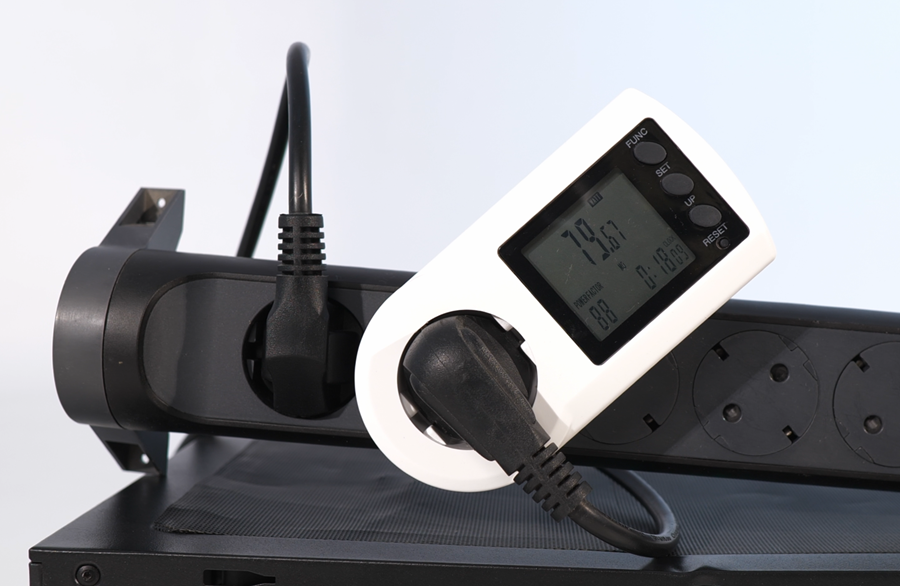I strongly believe that there’s not a single PC user on Earth who hasn’t, at least once in their lives, nagged at their laptop or tabletop computer for running too bloody hot or the cooling fans getting so loud you could not hear yourself think.
At such moments, all you want is to give your little machine some kind of pill to bring down the fever. Unfortunately, there’s no such thing.
Or is there? Spoiler: there is, it’s free, and it can lower your PC temperature and power usage by 34%, prolonging battery and CPU life along the way.
But before spilling the beans, let’s first figure out the main reason behind your computer overheating.
Chapter 1: The Problem of High Power Usage
I think you won’t get struck by the fact that the most important and most complicated part of your PC—the central processing unit, or simply the CPU—is also the culprit for it getting scorching hot. As you may know, chip manufacturers set a default frequency at which the processor operates efficiently, balancing power consumption and computational speed. However, they also leave room for overclocking, which allows for increasing the chip’s processing power per unit of time (clock speed) at the expense of significantly higher energy usage.
This nominal power of the chip is generally enough for everyday office and household use to keep performance lag-free and maintain a comfortable temperature with minimal noise from the cooling system. But occasionally, you may need faster computations, such as when you need a smooth picture during an intensive gaming session where numerous objects and particles are rendered on the screen simultaneously. In such a case, you may want to trade higher energy consumption for faster processing speed, and I’m not going to blame you.
But here’s the thing: these demands last for a few seconds or minutes only. But your CPU, without proper limitations, can keep squeezing out all the power it has, even for simple tasks. Why? Because, with its struggle for efficiency, it would rather perform an operation as fast as it can, at maximum capacity, and then drop back to normal levels after it’s performed. And it is exactly these peaks that heat up the system and the computer case and trigger the cooling fans to run rampant, making the device noisy and burning hot.
Inefficient overclocking
Now, let’s delve deeper into the details. Like I’ve already mentioned, the primary method to boost CPU performance is to accelerate its clock speed, which is followed by an increase in energy use. However, the efficiency drops per each additional watt (W) of power, meaning even small performance gains require significant increases in power usage. For instance, to reach maximum performance in stress tests with limits removed, Intel and AMD processors can consume up to 400 watt-hours (Wh).
Speaking of Intel in particular, which owns over 80% of the x86 desktop PC CPU market share, overclocking allows their 14th generation processors to increase the frequency by a few hundred megahertz (MHz), but comes at the expense of consuming significantly more energy, losing efficiency with every added watt.
Side effects
While it seems that the power excess and the overheating it brings along are already enough, there is at least one more reason for concern. If you are ecologically conscious like me, this one might just hurt your feelings as well.
As you may know, electric power (including household energy consumption) is among the top 2 contributors to greenhouse gas (GHG) emissions and is responsible for a quarter of humanity’s total carbon footprint. Moreover, IT equipment alone accounts for 2% of global GHG emissions. These numbers are alarming and are still growing.

Source: U.S. greenhouse gas emissions by economic sector in 2022, epa.gov
On a smaller scale, laptops and PCs, depending on the state and usage pattern, can consume anywhere from a modest 30 Wh, which is equal to 0.03 kilowatt-hours (kWh) for idle laptops, and up to an incredible 1200 Wh (or 1.2 kWh) for full-featured PC gaming setups. That said, the average PC’s power consumption is somewhere around 200 Wh (or 0.2 kWh), meaning that, if used 8 hours daily, it would use 48 kWh monthly, or 576 kWh annually.
These figures translate to almost 240 kg of carbon dioxide (CO2) equivalent. The same amount of CO2 allows for driving a gasoline-powered car for 614 miles or charging a phone for 15,853 times.
Source: epa.gov
With all that in mind, doesn’t it make you think, “Is there a way to avoid or at least minimize this impact?” This exact thought, along with being fed up with the computer constantly heating up, marked the beginning of the Camomile app’s development.
Chapter 2: The Solution to Lower Power Usage
Camomile, developed by the Outbyte team, is a free app designed to optimize CPU operation by lowering voltage and frequency when you don’t need your processor running at full throttle. This allows for a reduction in PC power usage and heat output while maintaining sufficient performance levels.
At the heart of Camomile is an algorithm that instructs your CPU to stay within its manufacturer-set clock speed, helping your processor avoid those peaks we discussed earlier in this article that trigger overheating.
This means that Camomile ensures your PC runs efficiently for 99% of its operation time and, what’s also important, at a comfortable temperature. And when you need this 1% of extra speed, you can simply turn Camomile off with a click of a button (or using a special hotkey to make it even easier).
The Camomile effect
Now, let’s talk numbers. As tests suggest, day-to-day use of Camomile allows for a 34% reduction in overall power consumption by your PC and a 28% growth in power efficiency. It comes as an additional bonus to your enjoyment of smooth operation without extra noise from the cooling system or overheating.
| CPU frequency, GHz | Temperature, ℃ | Power consumption, W | Efficiency, GHz per 1W | |
|---|---|---|---|---|
| Camomile disabled | 4250 | 87 | 121 | 35 |
| Camomile enabled | 3540 | 65 | 79 | 45 |
| Effect | -710 | -22 | -34% | +28% |
Clock speed and temperature with Camomile disabled
Power consumption with Camomile disabled


Power consumption and temperature with Camomile enabled
Another test was conducted to simulate office work, using an Excel spreadsheet with 1 million rows of random numbers and running a search for these numbers using the VLOOKUP formula. The test measured the execution time and energy consumption.
With Camomile enabled, the execution time increased by 10%, but the energy consumption decreased by 34%. Over a year of eight-hour workdays, this translates to a savings of 282 kWh on the tested PC (the savings depend on the processor’s power).
Running VLOOKUP in Excel with Camomile enabled
Running VLOOKUP in Excel with Camomile disabled
Upscaling the Camomile effect
As you can already see, Camomile allows you to significantly reduce PC power consumption and save on energy bills on a personal level. But what impact would Camomile have if implemented globally? Let’s imagine.
Like I’ve already mentioned, the exact energy savings depend on the CPU power of a specific PC, but on average, Camomile contributes to a 50 Wh economy per PC. If used for 8 hours a day on, let’s say, 100,000 PCs, this could result in a significant 14.4 gigawatt-hour (GWh) a year. This translates to a scary 675,528 (!) gallons of gasoline consumed or 1,185 homes’ electricity use for 1 year.
Source: epa.gov
Chapter 3: Conclusion
I believe that it’s now obvious that optimizing CPU performance, regardless of its manufacturer, is crucial, whether for reducing power consumption or minimizing the carbon footprint. Inefficient overclocking and unreasonably high energy use not only waste energy and make your PC scorching hot but also contribute to global warming by increasing greenhouse gas emissions.
The Camomile app offers an effective, user-friendly, and cost-free solution to this problem. By reducing voltage and managing CPU frequencies, Camomile can significantly decrease energy consumption and heat production without compromising performance for everyday tasks.
Moreover, when implemented globally, the impact of Camomile could be substantial, potentially reaching gigawatt-hours of energy saved annually, underscoring both the ecological and economical advantages of adopting Camomile on a wide scale.
FAQ
1. How to check my CPU power usage currently?
You can check your power consumption using Task Manager on Windows or Activity Monitor on macOS. Third-party applications like HWMonitor or CPU-Z will also give you very detailed power usage statistics.
2. Will it affect performance by reducing CPU power usage?
Of course, reducing power consumption of CPU slightly influences its performance, notably when it operates under resource-intense tasks, though in normal everyday usage of your computer the saving of CPU will prolong battery life without seriously observable slowing-downs.
3. How can I avoid overheating my CPU and still keep performance pretty good?
Besides, good cooling will avoid overheating at the price of good performance: cleaning dust off fans, applying good-quality thermal paste, and, finally, controlling CPU power to avoid extra-heavy loads when those are not necessary.


